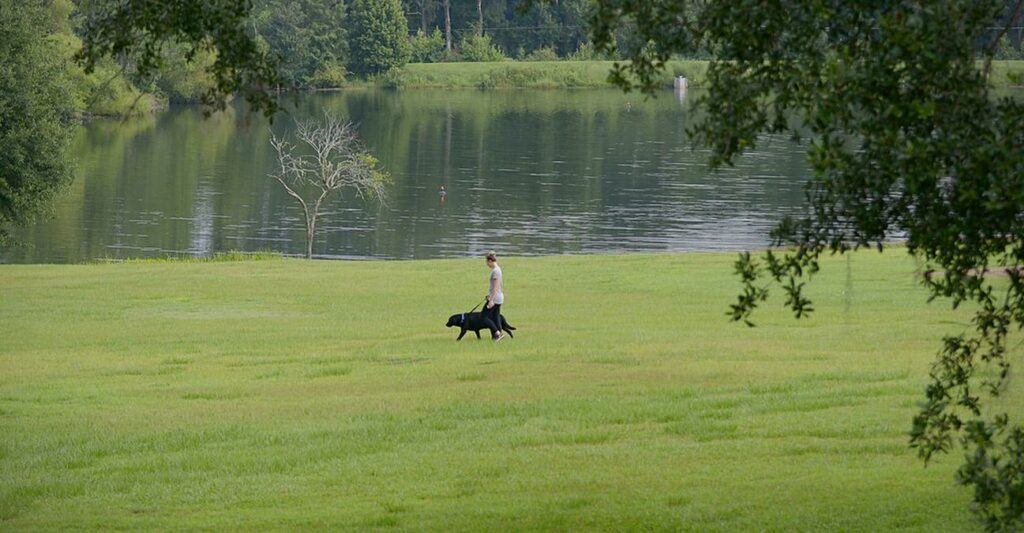

Dealing with wildlife damaging your gear or food in the outdoors is a common concern for outdoor enthusiasts. A beautifully-planned camping trip can quickly unravel when confronted with unwelcome visitors from the natural world. This comprehensive guide explores effective preventative measures and crucial steps to take if wildlife conflicts arise, allowing you to maximize your enjoyment while minimizing risk and promoting respect for wildlife and the environment. The guide is structured to provide a practical toolkit, from pre-trip planning to post-encounter actions, guaranteeing a safer and more enjoyable outdoor experience. We will start by defining the problem and then exploring practical solutions, followed by specific scenarios for different wildlife, concluding with preventative measures.
Understanding the Problem: Wildlife and Outdoor Gear
The Allure of the Outdoors and the Risk of Wildlife Encounters
The allure of the outdoors, with its breathtaking scenery and invigorating activities, draws many of us to explore nature’s wonders. However, this pursuit often intersects with wildlife, creating potential conflicts that can compromise our safety and enjoyment of the outdoors. Unforeseen interactions and subsequent damages are a common occurrence and understanding how to deal with these encounters is critical for safe and enjoyable outdoor adventures. From bear-resistant containers to understanding individual species’ behaviors, this section dives deep into practical preventative measures to minimize conflict.
Identifying Specific Wildlife Challenges
Understanding the particular issues presented by different wildlife species is paramount. Bears, for example, can be drawn to smells from campsites, resulting in damage to gear and food. Squirrels and other rodents can wreak havoc on unattended supplies, while deer or elk might damage vegetation, or even gear left unsecured. These conflicts are more common in designated wildlife areas and areas frequently frequented by large animal populations.
Preventing Wildlife Damage to Food and Gear
Essential Food Storage Techniques
Proper food storage is a crucial element in preventing wildlife conflicts. Bear-resistant containers, specifically designed to deter bears and other animals, are a must-have for any outdoor adventurer, especially in areas known for bear activity. These containers are designed to make your food inaccessible to animals and thus minimize the risk of attracting them to your camp site.
Securing Campsites and Gear
Ensuring that campsites and gear are secure is just as important as proper food storage. Store any food, scented items, and other attractants in bear-resistant containers or other secure storage solutions well away from the campsite. Make sure to completely secure all items on your campsite and protect everything from rodents and squirrels with adequate containers and storage methods.
Recognizing Wildlife Scent and Avoiding Attractants
Avoid using scented soaps, lotions, or perfumes as these can attract wildlife and create problems on your campsite. Likewise, ensure to avoid bringing any readily-available food or scented food into your tent or campsite.
Addressing Wildlife Conflicts
Immediate Actions Upon Encounter
If you encounter a bear or other wildlife while camping, the first action is to stay calm. Do not run; instead, slowly back away while maintaining eye contact. Avoid any sudden movements that could startle the animal. Making noise by yelling or clapping can also help to deter wildlife. This approach minimizes the chances of a conflict escalating to a dangerous situation.
The Importance of Proper Documentation
Accurately documenting any wildlife conflict is vital. Maintaining records of the situation, including the type of animal, the time of the incident, and the extent of the damage, aids wildlife management efforts and helps to identify patterns in future conflicts, potentially preventing future similar issues from arising. This documentation provides valuable data for understanding and managing wildlife interactions.
Seeking Assistance from Authorities and Wildlife Professionals
In cases where wildlife damage is significant or if safety is compromised, contacting local park rangers or wildlife authorities is crucial. They are trained to handle wildlife conflicts and can provide guidance on safe practices, suggest ways to prevent further conflicts, and assist in documenting the incident.
Long-Term Solutions for Wildlife Management
Implementing Long-Term Strategies
By adopting preventative measures, you can significantly minimize risks associated with wildlife encounters. Understanding the habits and needs of the wildlife in the area, and adopting relevant safety practices is paramount. Following local guidelines and recommendations provided by park rangers ensures responsible wildlife coexistence and creates an environment where both human and wildlife thrive. Carrying a wildlife guide and learning about the animals in the area beforehand is helpful to avoid conflict.
Sustainable Practices for Future Adventures
Practising sustainable and responsible camping techniques can have long-term positive effects. Proper waste disposal and minimizing the introduction of attractants into the environment allows for a healthy co-existence of both wildlife and human explorers. Practicing mindful behavior can assist in maintaining this balance and ensuring future trips remain safe and enjoyable.
Educating Yourself and Others
Educating yourself and others about safe wildlife interactions is an integral part of responsible outdoor recreation. By spreading awareness about safe practices in wildlife environments, you’re contributing to a safer and more harmonious relationship between humans and wildlife in those environments.
Conclusion: Preventing Wildlife Interactions
Summary of Best Practices
Protecting your outdoor gear and provisions while respecting wildlife is a delicate balance. Proper food storage, securing campsites, and recognizing wildlife behaviours are vital preventative steps. Always prioritize your safety and the well-being of the wildlife in the area by remaining respectful and aware of potential conflicts. This approach can ensure that your next outdoor adventure is an enjoyable and memorable experience.
Actionable Next Steps
The key to success is preparation! Make a checklist of things to do before your trip. This includes checking for local regulations, making sure you have the necessary equipment, practicing safety techniques, and maintaining the environment around your campsite. Remember to always respect the area’s wildlife, avoid causing harm to animals, and follow the guidance from local authorities and wildlife professionals. This approach minimizes conflicts and promotes a sustainable and respectful relationship between humans and wildlife.
Case Studies: Past Wildlife Conflicts
Case 1: Bear Encounters
Numerous cases highlight the importance of proper food storage. One case involved a hiker who left food scraps out at their campsite. Bears quickly learned of the easy meal source and became a persistent problem, resulting in repeated incidents of damage to gear and tents. Proper food storage prevented this problem from escalating into a dangerous conflict and maintained a positive relationship with wildlife.
Case 2: Deer Encounters
Deer are often drawn to readily available food sources, including vegetation around camp sites. This behavior can damage campsites and surrounding plant life. Careful selection of campsite locations and responsible waste disposal, particularly regarding scented foods and items that attract animals, significantly reduces the likelihood of these conflicts.
Importance of Proper Research and Planning
Understanding Local Wildlife Regulations
Understanding the regulations and guidelines regarding wildlife in the area you’re planning to visit is crucial for conflict prevention. Regulations can vary depending on the location, and familiarity with these rules ensures both your safety and respect for local ecosystems. It is important to comply with all regulations to avoid potential conflicts.
Researching Local Wildlife Species
Investigate the types of wildlife commonly found in the area, their behaviors, and typical triggers for conflict. This knowledge is invaluable for anticipating possible situations and planning ahead. Understanding a species’ behavior enables effective and proactive preventative measures. Familiarize yourself with species-specific guidelines for maintaining a safe and enjoyable outdoor experience.
Frequently Asked Questions
How can I prevent wildlife from damaging my gear?
Employing preventative measures like storing food properly in bear-resistant containers, using scent-reducing strategies, and securing campsites can significantly reduce the risk of wildlife encounters. It’s important to choose locations that are less appealing to wildlife by ensuring proper disposal of garbage and avoiding attracting animals with scented foods. By carefully following these guidelines, you can minimise the chances of wildlife issues arising during your outdoor trip, thereby safeguarding your belongings and promoting harmonious co-existence with the environment.
What should I do if wildlife damages my equipment or food?
If wildlife damages your outdoor equipment or food, safety should be your top priority. Leave the area immediately and inform authorities or park rangers if necessary. Take detailed notes of the incident, including the type and size of the animal involved, the extent of the damage, and any unusual behaviours. Avoid provoking the animal and try to collect any evidence like tracks or scat as these can prove invaluable to wildlife management professionals in maintaining balance and ensuring safety for future encounters.
What are some effective wildlife deterrents?
Utilizing natural deterrents, like strategically placed noisemakers, motion-activated sprinklers, or strategically placed scent deterrents can dissuade wildlife from approaching your campsite or belongings. Keeping your distance from wildlife, avoiding direct eye contact, and never feeding or approaching animals are crucial preventative measures. Always follow park guidelines and regulations regarding wildlife interactions and management. Employing these deterrents proactively can assist in maintaining a safe and enjoyable environment, allowing for safe exploration and wildlife preservation.
In conclusion, dealing with wildlife impacting your outdoor gear and provisions requires careful planning and proactive measures. Understanding animal behavior, utilizing appropriate deterrents, and having a well-stocked emergency kit are key components of responsible outdoor exploration. Remember to prioritize your safety and the well-being of wildlife in these situations. For further assistance, explore our comprehensive guide on wildlife safety or contact a local park ranger for more targeted advice. This proactive approach can ensure that your next outdoor adventure remains enjoyable and safe from wildlife conflict.